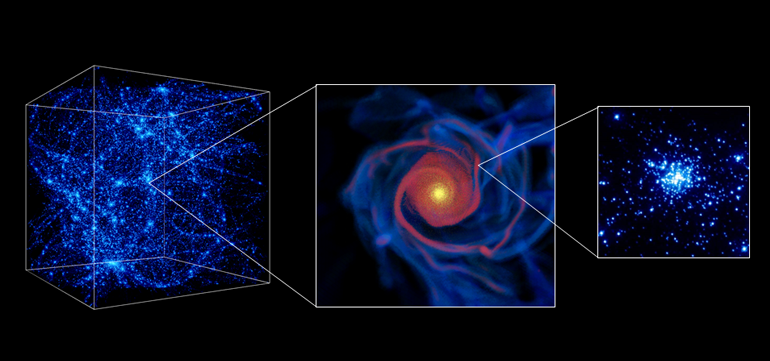
Globular cluster systems and their host galaxies
LOCATION: Sport & Kurhotel at Bad Moos - Via Val Fiscalina 27, 39030, Sexten
DETAILS
The formation and evolution of globular cluster (GC) systems is still an unsolved problem of modern astrophysics despite years of study. New observations have revealed that the distribution of sizes, masses and mass-to-light ratios of small stellar systems is largely continuous thanks to the discovery of a growing number of ultracompact dwarf galaxies and related objects, all of which have properties remarkably similar to GCs. At the same time, steady progress is being made in characterising the properties of GC systems, not only in our own Milky Way, but also in a growing number of local Universe galaxies. All these new observations add new pieces to the puzzle of how and where GCs form, starting as early as the epoch of reionization within the first billion years after the Big Bang, and then continuing through the hierarchical assembly of their host galaxies. GC systems are also providing new insight on the properties of galaxy halos at large radii. Simulations have now reached the size and mass scales relevant for direct modelling of GC system formation in a cosmological context. This meeting will bring together the leading observers and theorists from diverse backgrounds to review the current state of the field, discuss existing scenarios, and stimulate the exploration of new collaborative proposals for future modeling and for observations with next-generation telescopes.
The meeting will place GC systems in the context of their host galaxy and the interplay between them.
Scientific Organizing Committee
Dr. Michele Trenti (University of Melbourne, Australia - co-chair)
Prof. Duncan Forbes (Swinburne University, Australia - co-chair)
Prof. Jean Brodie (University of California, Santa Cruz, USA)
Prof. Oleg Gnedin (University of Michigan, USA)
Dr. Michael Hilker (ESO, Germany)
Prof. Alison Sills (McMaster University, Canada)
Prof. Jay Strader (Michigan State University, USA)
Dr. Chiara Tonini (University of Melbourne, Australia) Meeting
Structure
The meeting will have a schedule optimized for fostering of collaborations, with a small number of high quality invited talks of relatively short duration (25 minutes), followed by ample time for discussion (20 minutes) after each talk. New results from junior researchers (PhD students) will be presented in brief talks (10 minutes). The meeting will be by invitation-only, with the Scientific Organizing Committee soliciting expression of interests through a pre-registration on the Sexten Center webpage to complement the initial list of invited participants. Overall, the attendees will be approximately 45, selected among the most active researchers on the topic with the aim to bring together a diverse group that will include a range of backgrounds and seniority levels, reflected in the SOC composition itself. The proposed meeting period has been selected to avoid conflicts with other astronomy workshops, and to match the availability of all SOC members to convene in Sexten.
The registration fee is 320€ (including taxes) payable in cash at the conference or by bank transfer.
Write us
RELATED FILES
FEE
320 Eur
WORKSHOP CODE FOR BUS AND PAYMENT
ORGANIZERS
